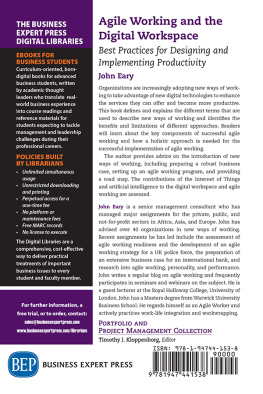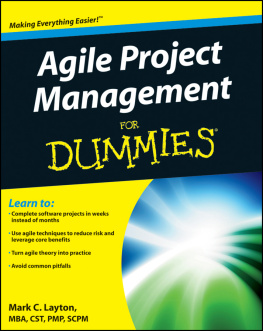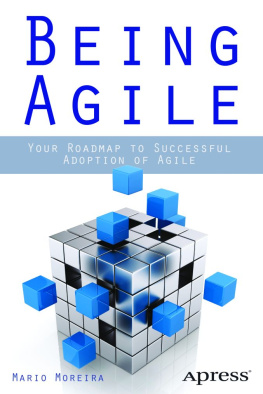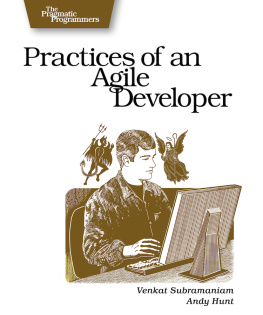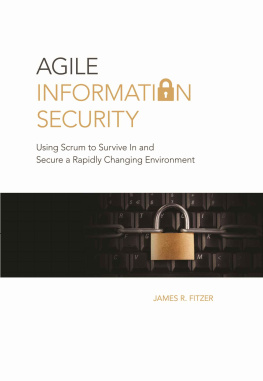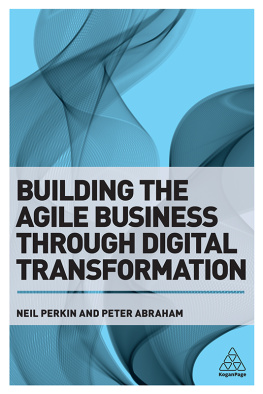
Agile Working and the Digital Workspace
Agile Working and the Digital Workspace
Best Practices for Designing and Implementing Productivity
John Eary

Agile Working and the Digital Workspace: Best Practices for Designing and Implementing Productivity
Copyright Business Expert Press, LLC, 2018.
All rights reserved. No part of this publication may be reproduced, stored in a retrieval system, or transmitted in any form or by any meanselectronic, mechanical, photocopy, recording, or any other except for brief quotations, not to exceed 400 words, without the prior permission of the publisher.
First published in 2018 by
Business Expert Press, LLC
222 East 46th Street, New York, NY 10017
www.businessexpertpress.com
ISBN-13: 978-1-94744-153-8 (paperback)
ISBN-13: 978-1-94744-154-5 (e-book)
Business Expert Press Portfolio and Project Management Collection
Collection ISSN: 2156-8189 (print)
Collection ISSN: 2156-8200 (electronic)
Cover and interior design by Exeter Premedia Services Private Ltd., Chennai, India
First edition: 2018
10 9 8 7 6 5 4 3 2 1
Printed in the United States of America.
To my wife, Janice
Abstract
Organizations are increasingly adopting new ways of working to take advantage of new digital technologies to enhance the services they can offer and become more productive. The aim of this book is to provide guidance on how agile working and a digital workspace can be successfully implemented in organizations that are looking to increase their productivity.
This book defines and explains the different terms that are used to describe new ways of working and identifies the benefits and limitations of different approaches. It draws on the authors extensive experience in assisting a wide range of organizations to adopt new ways of working and reflects established best practice.
You will learn about the key components of successful agile working and how a holistic approach is needed for the successful implementation of agile working. It will provide advice on the introduction of new ways of working, including preparing a robust business case, setting up an agile working program, and providing a road map. The contributions of the Internet of Things and artificial intelligence to the digital workspace and agile working are assessed.
HR, IT, property and facilities management professionals and line managers will gain an understanding of the concepts of new ways of working. They will find practical guidance in introducing agile working into their organizations and how the new initiative can be sustained.
Masters and undergraduate students in the above disciplines will gain a good grounding in the subject and they will have access to practical guidance for projects they undertake as part of their course.
Keywords
agile working, BYOD, collaborative working, digital workplace, dynamic working, flexible working, homeworking, hotdesking, mobile working, remote working, smart working, worklife balance, worklife integration
Contents
The early decades of the 21st century have seen significant movement in business and social trends. On the back of new digital technology waves of opportunity have been sweeping into all sectors enabling the demolition of barriers to new ways of working. This is the age of Agile.
Agile working is increasingly viewed as a critical commercial success factor in todays digital economy. However, as Digital McKinsey reports this is not just about technology, successful agile transformations address every aspect of the organization.
For many this means the development of new and unfamiliar operating models requiring new supporting infrastructure, skills, and settings but more importantly changes in mind-set, behaviors, and culture both within the organization and its supporting supply chain.
I have collaborated and worked with John over the last decade researching and engineering agility into a wide range of organizations. While John is a true professional, a technology project and program manager by trade, he is also an accomplished agilista, passionate about the quest to help and support organizations on their holistic agile working change journey and successful in creating their individual agile DNA.
In the following pages John draws on this passion and the practical experience gained in agilizing organizations over the past two decades and his knowledge of digital working to share his insights into the successful adoption of agile working.
Paul Allsopp,
Managing Director,
The Agile Organisation
I would like to thank Paul Allsopp for sharing his knowledge, guidance, and encouragement, Gavin Stretch for the design of the images in this book, James Eary for drawing the homeworking cartoons, Christina Jeffs and Leigh Fyffe for sharing their experiences, and Janice Eary for proofreading and her continuous support.
There has been a fundamental shift in the way people work in the 21st century. The rapid development of technology such as smartphones and other mobile devices and ubiquitous connectivity mean that it is no longer necessary to be in an office to work. Already more than half (55 percent)
Offices themselves have changed to better support the various activities that people undertake in the world of work. Up to five workforce generations are at work with different expectations and experience of technology.
Management of the new workforce is challenging when employees are working remotely and often outside what are standard office hours. Todays agile workers expect more autonomy in how they choose to work and also that their well-being is considered seriously. Agile working embraces these changes. When implemented correctly it can provide increases in productivity and service provision together with significant bottom-line savings to the organization. For employees agile working offers positive improvements in the quality of their life by taking more control of their work activities. Agile working should not be restricted to management and professional staff but should offer opportunities to the whole workforce.
The digital workspace provides the technology to support agile workers. The use of communication and collaborative tools can enhance an employees productivity. They can now have access to voice, video, messaging, and conferencing platforms from anywhere, on a range of devices. While many organizations have adopted a digital by default approach for their customers, they now recognize the advantages of a more digital experience for their employees.
Organizations are increasingly adopting new ways of working to take advantage of new digital technologies to enhance the services they can offer and become cost-effective. While more challenging in some sectors than others, when implemented correctly agile working and the digital workspace provide a positive employee experience, and can boost alignment, engagement, and retention.
This book aims to provide guidance on how agile working and other new ways of working can be applied effectively in organizations in the private, public, and not-for-profit sectors.
As a management consultant, I have assisted over 30 organizations in the adoption of new ways of working including major assignments in the private, public, and not-for-profit sectors. I write a regular blog on agile working, and I have contributed to seminars and webinars on the subject. I regard myself as an agile worker, and I actively practice worklife integration. Agile working has many aspects, and I have found that success is achieved by adopting a strategic, holistic approach, which I have sought to describe in this book, together with some practical insights.
Next page
